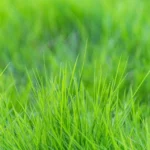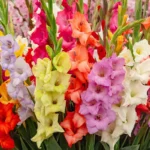
Aloe vera is a succulent plant (one with thick leaves) native to the Mediterranean region. There are 240 different types of aloe vera plants found in Europe, Africa, Asia, and America. Aloe vera thrives in dry, hot climates with well-drained soil. Because of its potential medicinal properties, aloe vera is a popular and widely cultivated plant. Aloe vera nutrients and compounds are widely used in the cosmetic and pharmaceutical industries. Aside from that, aloe vera is commonly grown as an ornamental plant.
Interesting facts about Aloe Vera:
The majority of aloe vera species lack a stem. The plant typically grows to a height of 24 to 39 inches.
Aloe vera leaves grow upright and form a rosette. They have a green or grayish color to them. The leaves are long, thick, fleshy, and have serrated edges. They are occasionally covered in white spots.
During the spring and summer, yellow flowers appear on long spikes. Male (stamen) and female (stigma) reproductive organs are found in flowers. To prevent self-pollination, pollen is produced and released from the flower before the female parts mature. Long-beaked birds, such as hummingbirds in America and sunbirds in Africa, are common pollinators of aloe vera flowers.
Aloe vera has a mutually beneficial relationship with fungi. They live inside the root of the aloe plant and aid in the extraction of nutrients from the soil. Aloe provides them with food in return.
Aloe vera is also known as burn plant (because it soothes skin burns) and desert lily (because of the habitat where they can be found).
In ancient Egypt, aloe vera was known as the “plant of immortality.” It has been incorporated into burial rituals.
Aloe vera is used in the food industry to make yogurt and other beverages.
Aloe vera is used in the cosmetic industry to make lotions, shampoos, makeup, and soaps.
Aloe vera seeds can be used as biofuel.
Four types of aloe vera are commercially exploited out of the 240 known varieties for the production of gels, capsules, and other products used to improve human health.
The leaves’ jelly-like substance contains 75 different minerals, vitamins, amino acids, and enzymes that are beneficial to human health.
Saponins, compounds with antimicrobial properties, are abundant in aloe vera (compounds that fight against bacteria, viruses and fungi).
In folk medicine, aloe vera is used as a laxative, to treat sunburns, and as a treatment for diabetes, osteoarthritis, epilepsy, and asthma.
Despite its global popularity and widely held belief that aloe vera is one of the world’s healthiest plants, recent medical studies suggest that oral ingestion of aloe vera may cause diarrhea, abdominal cramps, and hepatitis in humans.
Aloe vera has a long lifespan. It can live in the wild for more than 100 years.









